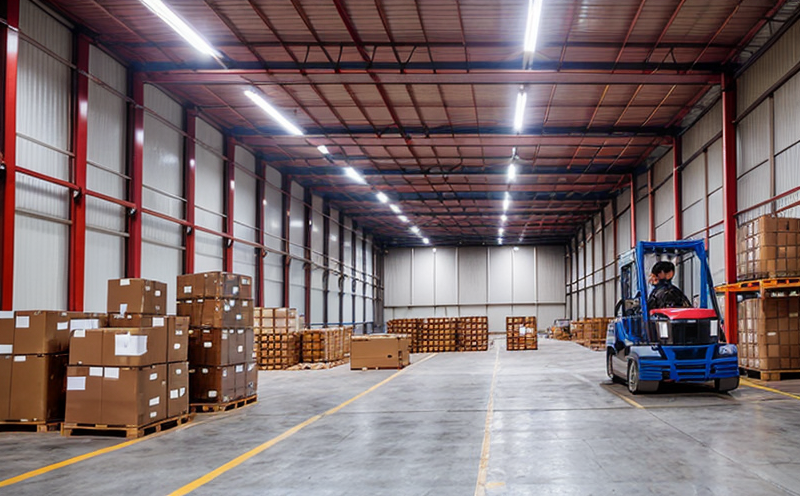EN 22873 Environmental Conditioning Testing of Packaging
The EN 22873 standard is a crucial part of industrial manufacturing and processing testing within the packaging sector. This test method aims to evaluate how various environmental conditions affect different types of packaging materials used in modern supply chains. By simulating real-world stressors such as temperature, humidity, vibration, and pressure changes, this testing ensures that packaging can withstand harsh environments during transportation, storage, and handling.
The importance of EN 22873 lies in its ability to provide a standardized approach for assessing the durability and integrity of packaging materials. This is especially critical for industries where product quality and safety depend on the packaging's performance under extreme conditions. For instance, pharmaceutical companies rely heavily on robust packaging solutions that maintain the efficacy of their products through various stages from manufacturing to retail.
Understanding the nuances of this standard helps stakeholders appreciate its significance in ensuring consistent quality across supply chains. It allows manufacturers to identify potential weaknesses early and implement necessary improvements before they impact end users adversely. Furthermore, compliance with EN 22873 demonstrates a commitment to best practices that enhance customer satisfaction while maintaining regulatory standards.
EN 22873 covers various types of packaging materials commonly used in industrial settings, including but not limited to plastic films, corrugated cardboard boxes, metal containers, and composite structures. The testing procedure involves subjecting samples to controlled environmental factors over specified durations. These conditions replicate typical logistic challenges faced by these packages during their lifecycle.
For effective EN 22873 compliance, it's essential to understand the specific requirements outlined in this standard. This includes knowing which types of packaging are covered, understanding how sample preparation impacts test results, and recognizing key acceptance criteria that determine whether a particular batch passes or fails.
The testing process typically involves placing packaged specimens into an environmental chamber capable of replicating diverse climatic conditions. Temperature fluctuations, humidity levels, and other relevant parameters are adjusted according to the prescribed protocol laid down by EN 22873. Once subjected to these controlled environments for designated periods, samples undergo inspection for any signs of degradation or failure.
It's also important to note that some aspects may vary depending on the material type being tested; therefore, familiarity with relevant sections of the standard is beneficial. Adhering strictly to specified procedures ensures accurate assessment and reliable outcomes, which are vital for quality assurance purposes within manufacturing processes.
| Environmental Factors | Description |
|---|---|
| Temperature Range | -40°C up to 85°C |
| Humidity Levels | 10% RH down to 93% RH |
| Vibration Frequency | 1 Hz - 200 Hz (±1%) |
| Pressure Variations | -50 kPa to +50 kPa |
The above table provides an overview of some critical environmental factors considered during EN 22873 testing. These conditions are designed to mimic actual field experiences encountered by packaging materials throughout their intended lifecycles.
Applied Standards
- EN 22873: Packaging - Environmental Conditioning Testing for Resistance to Climatic Exposure
- ISO 14001: Environmental Management Systems
- ASTM D695: Standard Test Methods for Rubberlike Materials Used in Sealing Applications
- IEC 62368-1: Safety of Information Technology Equipment - Part 1: General Requirements
The EN 22873 standard is integral to ensuring that packaging materials used in industrial manufacturing processes meet stringent environmental requirements. Compliance with this standard guarantees consistent performance across different climates and conditions, thereby enhancing product safety and reliability.
Customer Impact and Satisfaction
- Enhanced customer confidence through proven durability of packaging solutions
- Increased market share due to superior quality assurance measures
- Promotion of sustainable practices by reducing waste associated with non-compliant products
- Improved supply chain efficiency resulting in faster delivery times and reduced costs
The successful implementation of EN 22873 testing directly contributes to higher levels of customer satisfaction. By ensuring that packaging materials can withstand harsh environments, companies can reduce the risk of product damage during transport or storage. This ultimately leads to better customer experiences and increased loyalty.
Competitive Advantage and Market Impact
Adhering to EN 22873 not only meets regulatory requirements but also sets a benchmark for excellence in quality management within the packaging industry. Companies that embrace this standard are better positioned to compete effectively by offering superior products that meet international standards.
In today's global market, where supply chains span continents and cultures, having a standardized approach like EN 22873 becomes increasingly valuable. It fosters trust among stakeholders, including suppliers, distributors, retailers, and end consumers. This standardization promotes consistency in quality across all stages of production, distribution, and consumption.
Furthermore, compliance with EN 22873 can lead to cost savings by preventing unnecessary returns or recalls associated with damaged goods due to inadequate packaging protection. Such measures contribute significantly towards improving overall profitability for businesses operating within the industrial manufacturing sector.





